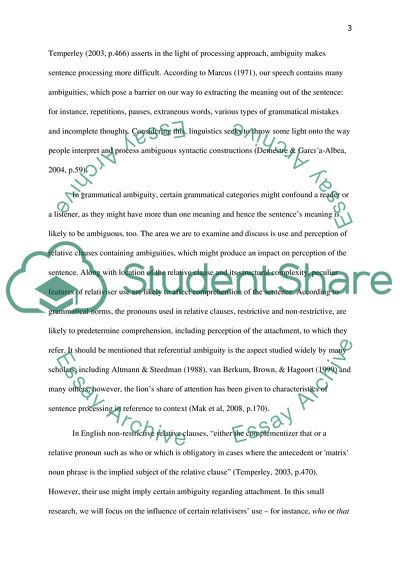Cite this document
(Effect of Relativisers on Attachment Preferences Report Example | Topics and Well Written Essays - 2250 words, n.d.)
Effect of Relativisers on Attachment Preferences Report Example | Topics and Well Written Essays - 2250 words. https://studentshare.org/humanitarian/1860204-for-your-project-assignment-write-up-a-3000-4000-word-report-of-a-project-chosen-from-the-list-below-you-should-work-independently-on-this-project-though-you-are-encouraged-to-communicate-with-other-students-about-how-to-design-execute-and-analyze
Effect of Relativisers on Attachment Preferences Report Example | Topics and Well Written Essays - 2250 words. https://studentshare.org/humanitarian/1860204-for-your-project-assignment-write-up-a-3000-4000-word-report-of-a-project-chosen-from-the-list-below-you-should-work-independently-on-this-project-though-you-are-encouraged-to-communicate-with-other-students-about-how-to-design-execute-and-analyze
(Effect of Relativisers on Attachment Preferences Report Example | Topics and Well Written Essays - 2250 Words)
Effect of Relativisers on Attachment Preferences Report Example | Topics and Well Written Essays - 2250 Words. https://studentshare.org/humanitarian/1860204-for-your-project-assignment-write-up-a-3000-4000-word-report-of-a-project-chosen-from-the-list-below-you-should-work-independently-on-this-project-though-you-are-encouraged-to-communicate-with-other-students-about-how-to-design-execute-and-analyze.
Effect of Relativisers on Attachment Preferences Report Example | Topics and Well Written Essays - 2250 Words. https://studentshare.org/humanitarian/1860204-for-your-project-assignment-write-up-a-3000-4000-word-report-of-a-project-chosen-from-the-list-below-you-should-work-independently-on-this-project-though-you-are-encouraged-to-communicate-with-other-students-about-how-to-design-execute-and-analyze.
“Effect of Relativisers on Attachment Preferences Report Example | Topics and Well Written Essays - 2250 Words”. https://studentshare.org/humanitarian/1860204-for-your-project-assignment-write-up-a-3000-4000-word-report-of-a-project-chosen-from-the-list-below-you-should-work-independently-on-this-project-though-you-are-encouraged-to-communicate-with-other-students-about-how-to-design-execute-and-analyze.


